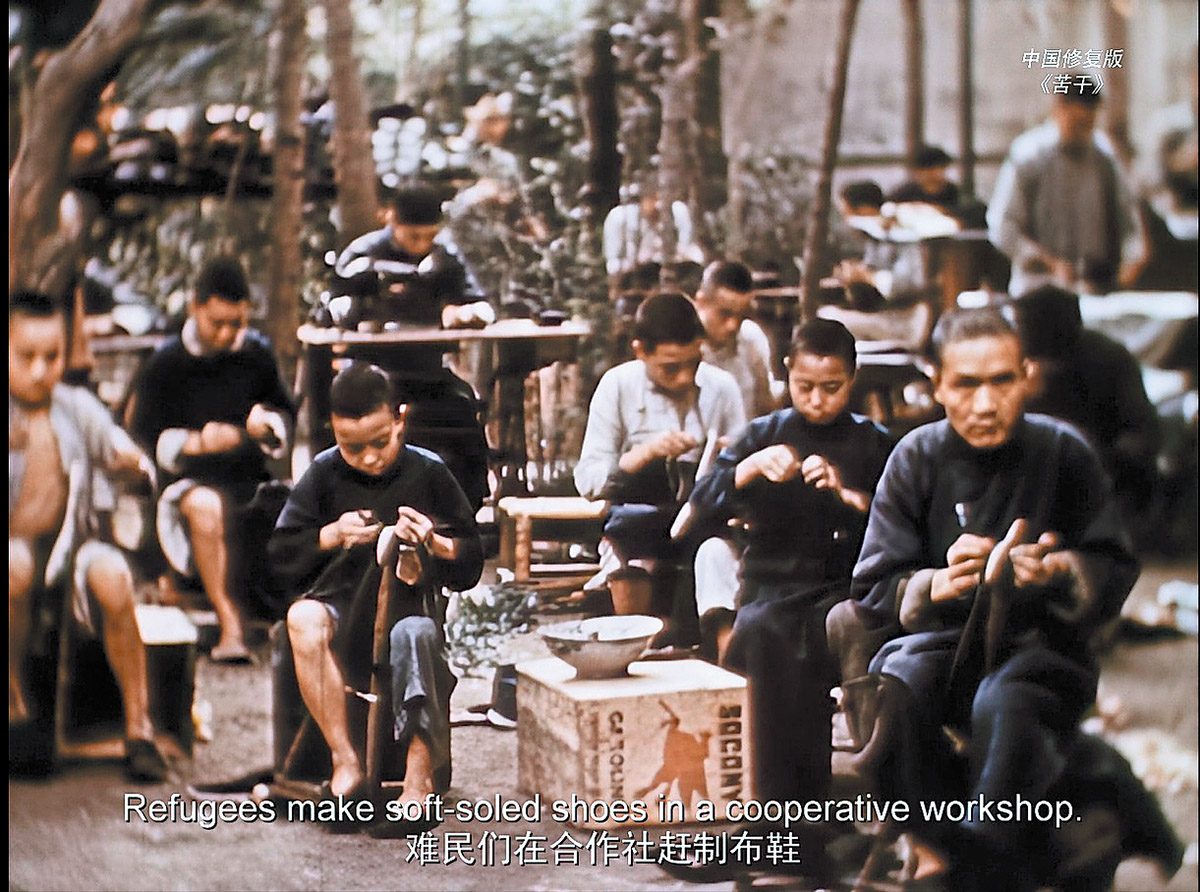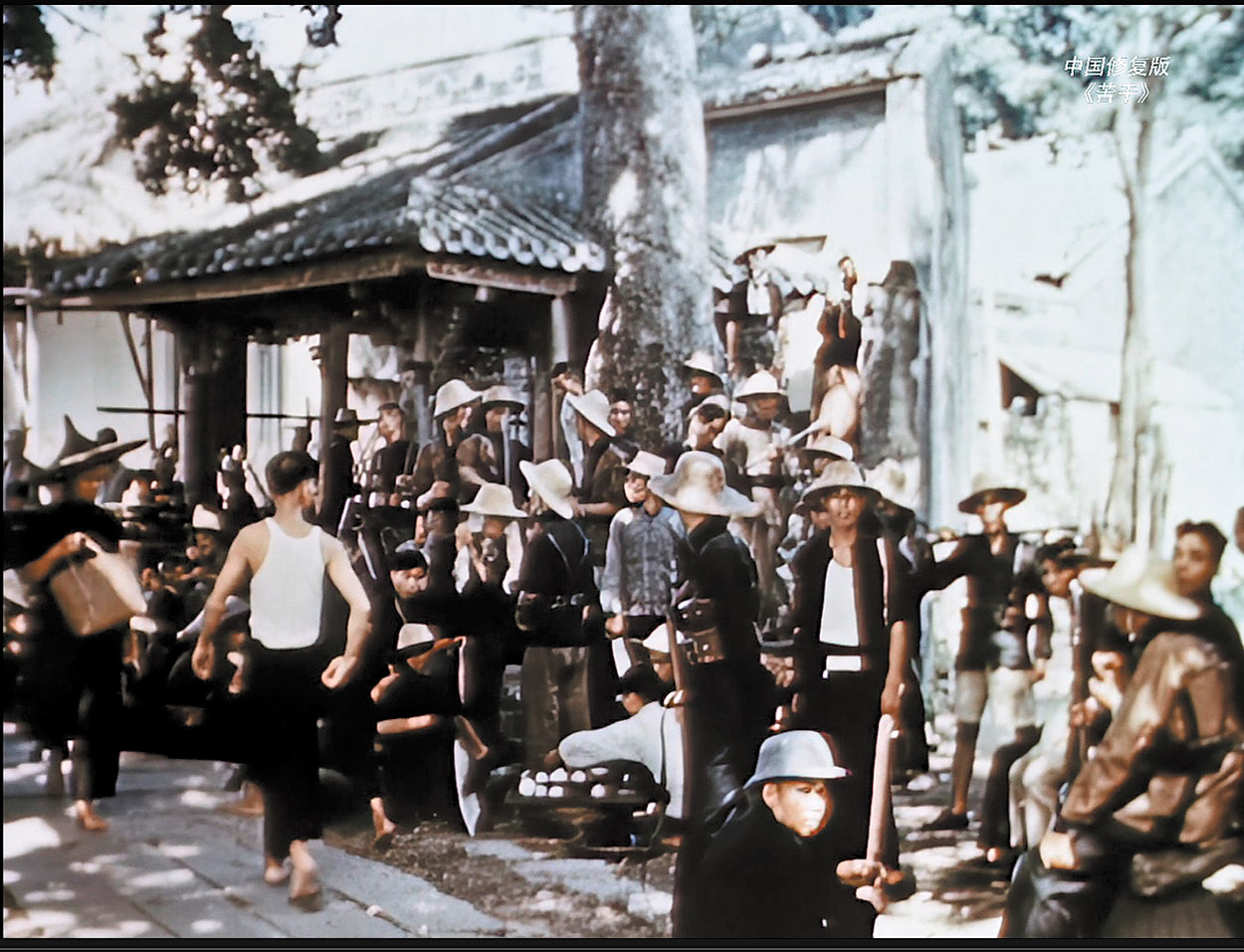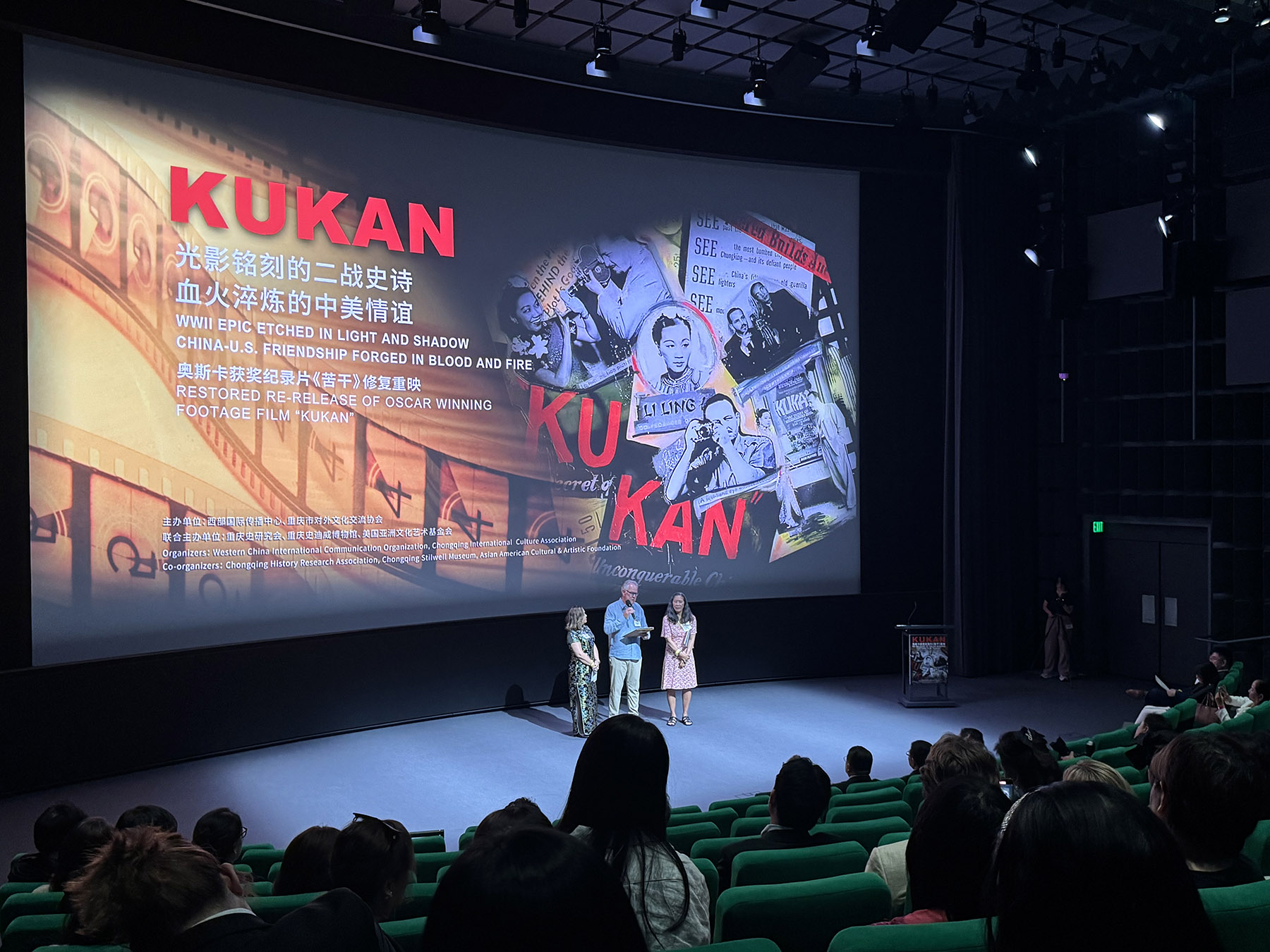Oscar-honored Kukan, rediscovered and restored, is screened in Los Angeles, reigniting memories of China-US alliance, Rena Li reports.

From the Oscar stage in 1942 to a forgotten reel in a photographer's basement, and now, a triumphant return at the Academy Museum of Motion Pictures, the once-lost documentary Kukan: The Secret of Unconquerable China has come full circle.
On June 24, a restored version of this historic film — documenting China's heroic resistance during the Chinese People's War of Resistance Against Japanese Aggression (1931-45) — was screened in Los Angeles, reigniting memories of a shared wartime alliance and a cross-Pacific cultural legacy.
Kukan, meaning "heroic spirit through bitter struggle" in Chinese, was one of the first American full-length color documentaries to receive an Academy Award. Filmed by American war correspondent Rey Scott and coproduced by Chinese American playwright Li Ling-Ai, the film offered a rare and visceral window into the front lines. It won a special Oscar in 1942, praised for its raw footage of wartime Chongqing and its emotionally powerful narrative.
READ MORE: Digital diary of unsung courage
For decades, the film was thought lost, its only known print having vanished without a trace, making it the only Academy Award-winning documentary to be classified as missing. That changed in 2009 when Chinese American filmmaker Robin Lung discovered a surviving copy in the basement of Rey Scott's family home.
"I wanted to know how come I had never heard of Kukan, and how come I had never heard of this Hawaiian woman, Li Ling-Ai?" Lung told China Daily. "In Li's time, the Chinese Exclusion Act was still in place. She helped create this film, yet was credited only as a 'technical adviser'."
Lung's decade-long journey to uncover the truth behind the film's disappearance brought her to China in 2014, retracing Scott's wartime steps and delivering a VHS copy to the Chongqing China Three Gorges Museum. "What I learned was how difficult it is to determine historical truth, and how fragile our visual memory really is," she said.

A recovered legacy
The rediscovery and restoration of Kukan was more than an academic or archival victory; it was a spiritual homecoming. In 2015, after 39 contract revisions, the Chongqing China Anti-Japanese War Rear Area Research Collaborative Innovation Center secured exclusive rights to distribute the film in China. Chinese scholars under Professor Zhou Yong worked closely with American partners to collect, translate, and reconstruct the footage, creating a complete Chinese-subtitled version.
"This work is like a key to decoding the past and deciphering the life of Kukan," said Liu Jingyu, a historian at the Chongqing China Three Gorges Museum. "It not only brought these precious images back to life but also opened a new field of international research on the war's visual history."
Tang Jianping, manager of the Western China International Communication Organization, detailed the painstaking restoration effort. "The film was heavily damaged, so we used a combination of AI and manual restoration techniques," she explained. "Missing frames were re-created, scratches removed and grainy footage enhanced. It was a fusion of technology and historical preservation."
The restored version was screened to commemorate the 80th anniversary of the victory in the war against Japanese aggression and the World Anti-Fascist War. A new documentary, The Return of Kukan, is also in production to showcase Chongqing's transformation over the past 80 years.
History lives on
At the screening in Los Angeles, descendants of Li Ling-Ai and Rey Scott gathered to honor their fore-bearers' legacies.
"My aunt was raised in America but was a child of the East," Gerianne Chum Lee, Li's niece, told China Daily. "She never abandoned her Chinese roots."
Kebler Andrew Lee, Li's great-great nephew, credited her influence for his own journey to teach English in Nanjing. "She believed in bringing the Chinese and American worlds together, and I'm proud to carry that forward," he said.
Stefanie Lee, Li's great-grandniece, recalled meeting her as a child. "She was larger than life. This movie is a powerful inspiration for future generations," she said.
Rey Scott's son, Mark Kennet Scott, reflected on how the film created cross-cultural understanding during wartime. "From my father's movie, you can see how well Americans and Chinese empathized with each other. Despite today's political tensions, the people can still maintain the empathy and hardworking spirit that once united them," he told China Daily.
Mark Scott, who had watched Kukan in a schoolroom in the 1960s, remembered the impact: "No one knew much about China. But after watching the film, everyone had a million questions."

Bridging two nations
The Los Angeles screening was part of a China-US cultural exchange event themed "For the Friendship of the Chinese and American Peoples", coorganized by the Chongqing International Culture Association, Western China International Communication Organization, and Asian American Cultural and Artistic Foundation.
"Kukan is more than a documentary — it is a living epic of wartime resistance," said Guan Hong, chairman of the Chongqing International Culture Association. "It captured convoys braving artillery fire on the Burma Road, and Chongqing in ruins under Japanese bombs. Yet it also captured a people standing unyielding."
Guan emphasized the profound gratitude China holds for the American people's support during the war. "The donated supplies, the airlifts over the Himalayas, and the young lives lost, these are forever cherished in Chinese people's memories."
He donated the restored Kukan to the Academy Museum of Motion Pictures, where it will be preserved as part of the permanent archive.
"Returning to the birthplace of the Oscars with this restored masterpiece is not only a cinematic revival, it is our highest tribute to the Chinese and American peoples' shoulder-to-shoulder fight against fascism," Guan added.
ALSO READ: Wartime relics tell of sacrifice and resolve
Matt Severson, executive vice-president of collections at the Academy of Motion Picture Arts and Sciences, praised Rey Scott's bravery. "With just a 16mm camera and immense courage, he documented China's struggle under fire. We're honored to preserve Kukan in the Academy Film Archive. This is history entrusted to us."
The Academy Film Archive now holds over 250,000 films, including works by legendary filmmakers and global treasures like Kukan.
As filmmaker Richard Anderson noted, Kukan reveals how China was the first front of the global war. "The Chinese army tied down hundreds of thousands of Japanese troops. This was crucial to the Allies' eventual success," he said.
Bob Underwood, a producer and writer, stressed the film's continued relevance. "It's more impactful than ever with its high-resolution imagery. Today, as China and the US face shared global challenges, this kind of cultural cooperation is vital."
Contact the writer at renali@chinadailyusa.com


